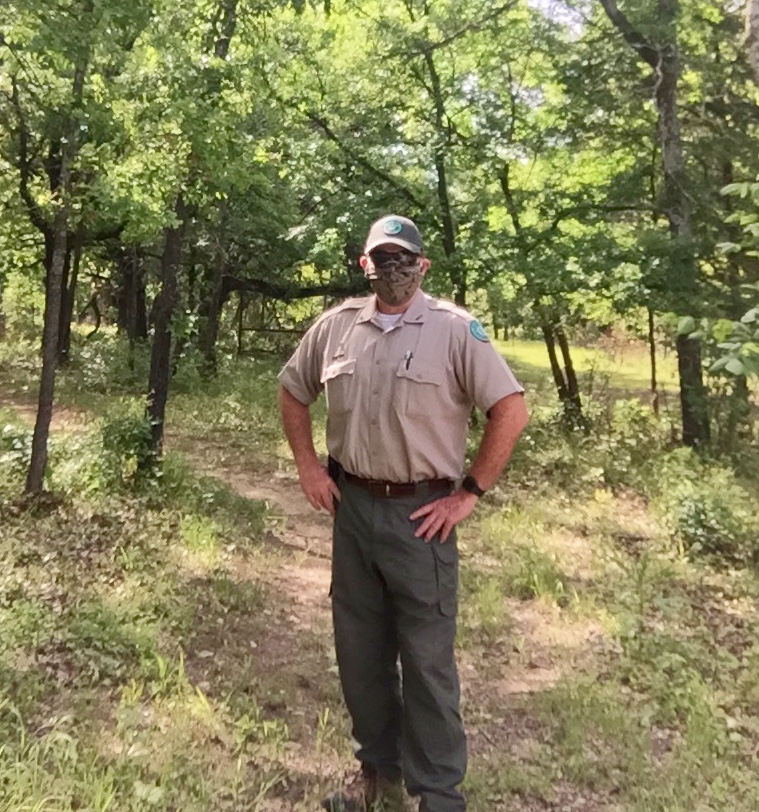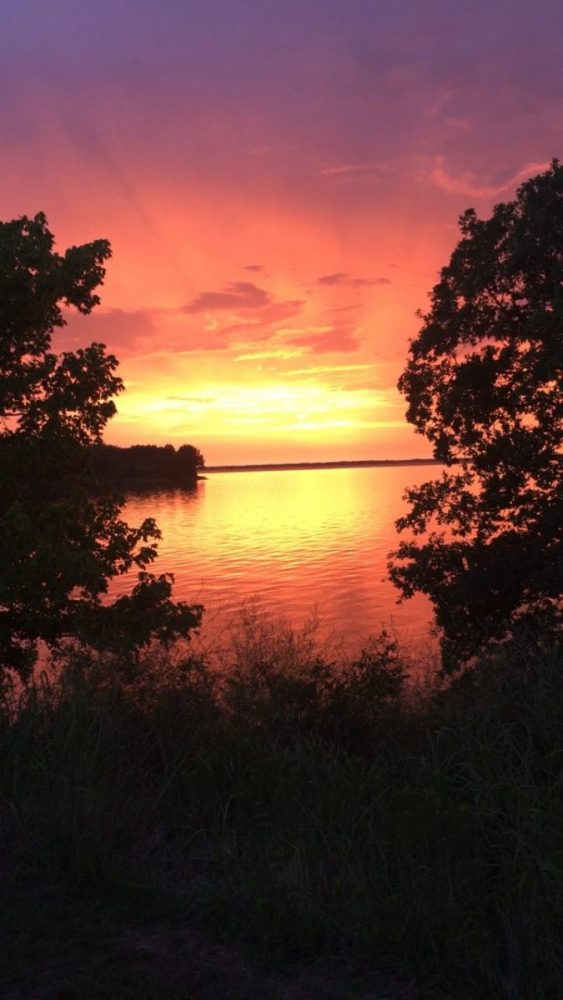“Prescription Nature – How Cooper Lake State Park and Other Texas State Parks can Help Make You Happier and Healthier”
by Steve Killian, Cooper Lake State Park Complex Superintendent

As I wander through the post oak canopied forest on my four-mile Coyote Run Trail hike at Cooper Lake State Park, I’m taken with a sense of well-being and a release from my daily worries. The multiple hues of green, the chattering of a gray squirrel, the foraging of the nine-banded armadillo in the leaf litter, the white-tailed doe and her two fawns that cross the trail in front of me, the multiple species of song birds singing a chorus in the trees, plus my physical exertion all intertwine and set the backdrop for this most satisfying experience. Is this a normal / natural occurrence for those experiencing nature? Well, yes, developing research says this actually is a common reaction to immersion in nature. Let’s explore what scientists are discovering through research on the topic and what poets and philosophers have known for eons about these personal experiences in natural wild places – they touch the soul and uplift the spirit!
We all strive to be our best and we are always looking for that magic pill to help us lose weight, feel better, be happier, be more productive, and live longer. What if I told you that you could begin to see changes in these positive directions by beginning a journey into nature? Could it be that simple? Many scientists are beginning to say YES! After reading the book, The Nature Fix by Florence Williams, I began my deep dive into this fascinating life changing subject. So let’s get started and explore the science.
We Americans are spending many more hours trapped indoors, in our vehicles more than ever before. A recent review of data from a smartphone app called Mappiness showed this unsettling fact with only 7% of our time spent outside of our confinements. American and British children spend 50% less time outdoors than their parents. We humans have developed over the eons spending 99.9% of our time outside. We are wired for nature and not a sterile indoor environment. There is an epidemic of chronic ailments such as obesity, diabetes, ADHD, depression, myopia, and vitamin D deficiency mitigated conditions just to name a few. Our lack of access to the outdoors has dramatically reduced our health. For the first time since the modern era of medicine, we are actually seeing a decrease in life expectancy even with all the “miracles of medicine.” We are moving less and getting less natural light which has serious health consequences for the brain and body.
What can a walk in the woods do for you? Research has shown that we need at least 30 minutes of daily walking that elevates the heart rate to begin to see positive health benefits, especially cardiovascular. Dr. Art Kramer, neuroscientist from the University of Illinois, has shown that exercise protects the brain from cognitive decline associated with aging. Are all walks / exercise equal? Studies have shown that those walking in nature result in a significant reduction in circular negative thoughts as opposed to a walk in a built landscape. Dr. Miyazaki, Chiba University, a Japanese scientist, in a research paper in 2011, concluded that walking on a forest trail can reduce stress in the body. In addition, Dr. Rachel Kaplan from the University of Michigan, has shown individuals who walk in nature show less anxiety and clearer thinking. Nature makes us humans happier and smarter! Liisa Tyrvainen, Natural Resources Institute of Finland, through her research has concluded that positive mood and a reduction in depression is accrued with a minimum of five hours per month in a natural place. She has also found that the relationship seems to be dose dependent with ten hours a month showing even better neurological benefits. A few doctors are now even beginning to prescribe “a walk in nature” as opposed to Xanax or other mood-altering drugs as a course of action for motivated patients. Positive biological pathways are in place that seem to become active when we are hiking a trail by regulating our autonomic nervous system to settle to a calming state of being. Nature immersion also works indirectly to facilitate meaningful moments of sharing between friends hiking a trail and even encouraging you to continue to exercise longer than in an indoor exercise facility.
Nature has additional benefits even if you are not being physically active at every moment when you’re in a park. When is the last time you stopped and watched a beautiful sunset or sunrise across a lake, stood on the edge of a cliff, gazed at a waterfall, watched waves crashing on the beach, observed twin fawns suckling their mom, viewed the heavens where the night sky were awash with hundreds of thousands of stars…? These magical, amazing, goose-bump generating experiences are what we call AWE. Awe is a concept of experiencing something immense and outside what is commonplace. The presence of something vast that challenges our understanding of the world. We feel transcended and part of something bigger with awe. Awe is a powerful positive emotion like love, joy, contentment, and amusement that we don’t get enough of, especially with our indoor sedentary lives. Awe is maybe the most misunderstood positive emotion. Awe from nature has an amazing ability to lower stress, make us more cooperative, giving, happier, and improve our overall feeling of well-being. Our 89 Texas State Parks are all amazing in their own special ways with awe-inspiring landscapes!
I have just touched on a fraction of the benefits of hiking and walking in a Texas State Park, National Park, or natural county or city park can offer. Specifically, how can you get started where you are? Cooper Lake State Park has a vast number of trails through the forest. We have trails for all fitness levels. The Cedar Creek Trail at our Doctors Creek Unit is short and flat with very little vertical relief. These trails are perfect for those just getting into the natural fitness experience. The Coyote Run Trail at the South Sulphur Unit is longer and more physically challenging than the Cedar Creek Trail. The Coyote Run Trail is probably my favorite trail with just enough distance at 4.6 miles and vertical relief to be moderately challenging. Our equestrian trails at the South Sulphur Unit are vast with about 15 miles of winding, relief rich, tree canopied goodness. If you plan on hiking most of these trails in a day, this would be considered the most challenging trail experience we offer. The key here is consistency. Make it a point to schedule your time weekly to get outside into the natural landscape found at Cooper Lake State Park. Both the South Sulphur and Doctors Creek Units at Cooper Lake State Park can be your core workout location while mixing in other local Texas State Parks, natural county and city parks, plus other trails such as the Northeast Texas Trail that runs from Farmersville to New Boston with multiple amazing segments to experience. Exercising in nature can make you happier, healthier, smarter, and more creative! Now it is up to you to begin you own personal journey of health and discovery. Enjoy your hike!
Several Texas State Parks in the region ready to host your physical exploration!
- Atlanta State Park
- Caddo Lake State Park
- Cooper Lake State Park
- Daingerfield State Park
- Lake Bob Sandlin State Park
- Cedar Hill State Park
- Ray Roberts Lake State Park
- Martin Creek Lake State Park
- Purtis Creek State Park
- Lake Tawakoni State Park
- Tyler State Park






